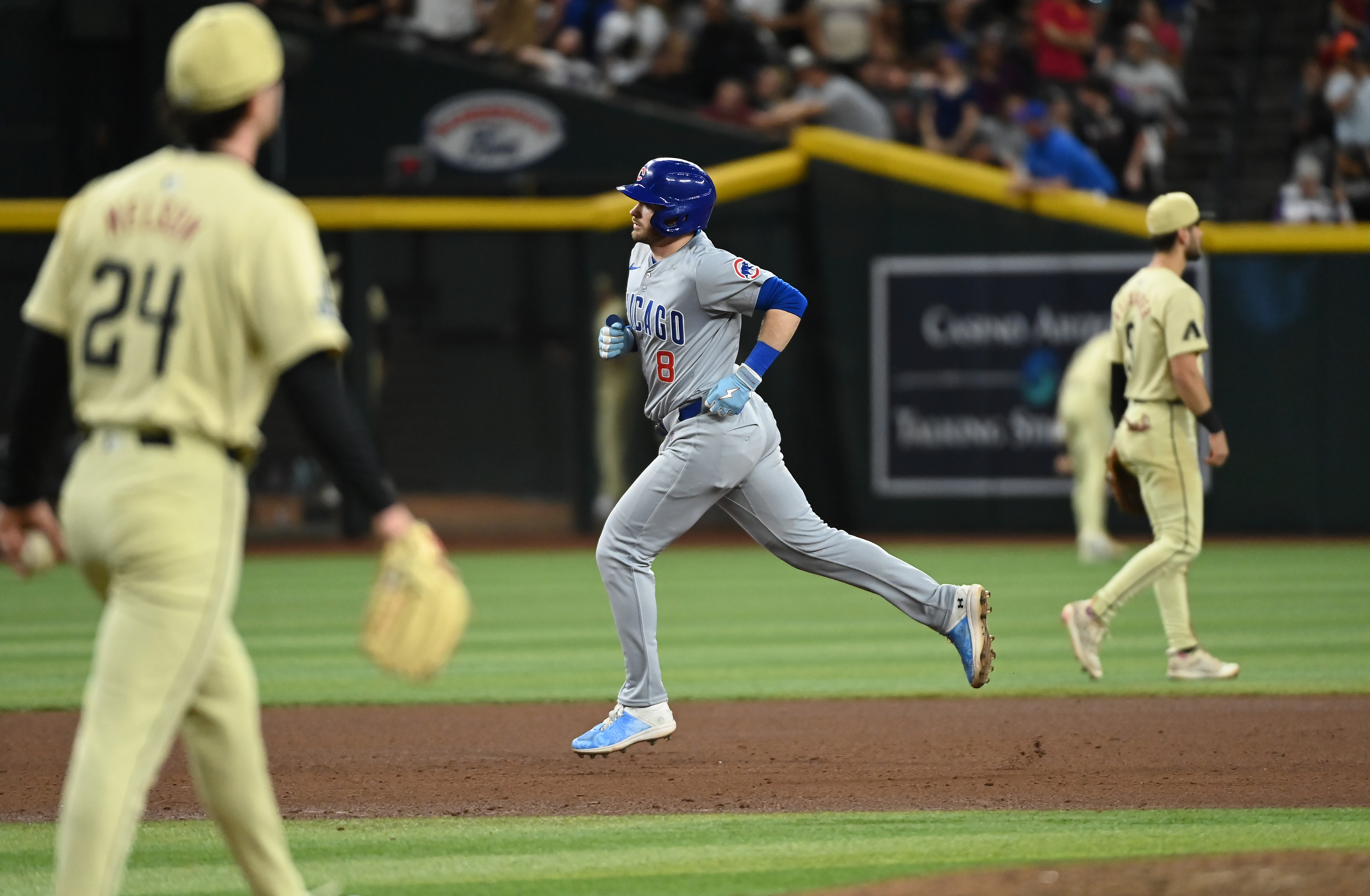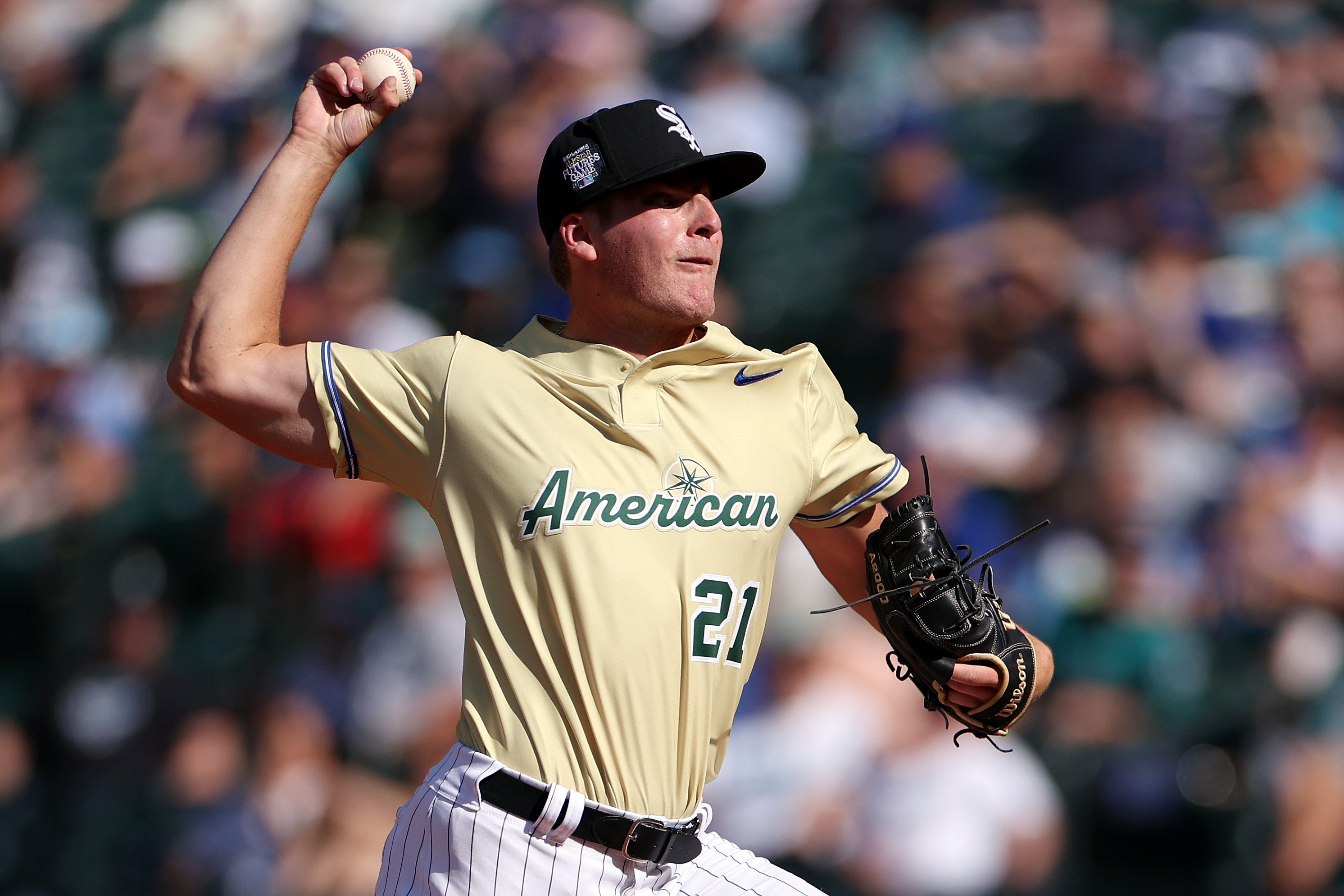The disbelief on Frank Schwindel’s face said it all.
Schwindel’s drive to deep left field Tuesday against the Padres looked like a potential go-ahead, two-out, ninth-inning grand slam off the bat.
It fell into Jurickson Profar’s glove up against the wall for the final out of a 5-4 Cubs loss.
Saturday, Cubs third baseman Patrick Wisdom's drive to left field sounded and looked good off the bat. It fell harmlessly into Dodgers outfielder Cody Bellinger’s glove a few feet shy of the wall.
“That kind of makes us wonder,” Wisdom said.
The baseball itself has been a hot topic around MLB through the first month-plus of the 2022 season — when home runs and offense are down compared to recent years. League-wide offense the last two Aprils:
APRIL 2021: .244/.317/.411, .167 ISO
APRIL 2022: .233/.307/.371, .138 ISO
Players, including former MVP and Brewers’ Andrew McCutchen and Mets starter Chris Bassitt, have discussed the difference in the ball this year.
“We know they’re not the same,” McCutchen told reporters after a win over the Pirates last month, after he hit a solo homer that barely made it over the wall. “Balls are hit well. There’s nothing to show for it.”
Schwindel can attest to that.
MLB
Wisdom isn't accusing anyone of anything. If anything, he seems as confused and perplexed as fans.
“It's noticeable in the sense that you see the exit velos and launch angles, but then the ball doesn't go as far,” said Wisdom in a conversation with NBC Sports Chicago before that moment Saturday. “So that kind of makes us wonder.
“And, honestly, it was sparked by just the talk around the league and by the reporters, and the questions. I was like, ‘Huh, maybe there's something to it if people will keep talking about it.’ I see other players discuss it. So it is strange.”
It’s not just the players. Balls hit at optimal launch angles and high exit velocities are producing fewer hits.
SLG with 26–30-degree launch angle, 97-102 mph exit velocity (per Baseball Savant):
2018: 2.019
2019: 2.322
2020: 2.293
2021: 1.914
2022: 1.413 (as of Wednesday)
Schwindel’s drive had a 33-degree launch angle and 102.5-mph exit velocity.
So, what’s going on?
The conversation goes back a few years. MLB bought a stake in Rawlings, which produces the balls at a plant in Costa Rica, in 2018.
In the 2019 “juiced ball’ season, home run rates soared. Teams collectively hit a record 6,776 homers, 671 more than were hit in any single season.
In response, MLB — according to the Associated Press — sent a memo to teams before the 2021 season stating it was deadening the ball. The new one was expected to travel 1-to-2 feet shorter.
MLB used two balls last season, according to a report by Business Insider: those from 2020 and the deadened ones introduced in 2021. The league attributed it to manufacturing shortages brought on by the pandemic.
According to The Athletic, the league sent a memo to teams in March saying only one type of ball will be used in 2022.
The ball is one possible explanation for what we’ve seen so far this season. Weather is another. Offense picks up in the summer months, and in Chicago, Wrigley Field is traditionally pitcher-friendly early in the season with the wind blowing in.
“I hit it great,” said Jason Heyward of his game-ending fly out in the nightcap of Saturday’s Dodgers doubleheader that also seemed headed for the bleachers off the bat.
“I knew I hit it really well. But I do know it’s early May, it’s Wrigley and it’s chilly and the wind was blowing across. As I know also, I’ve learned it’s more of a right-handed-hitter-friendly park."
Then, there’s humidors. MLB is storing game balls in them at all 30 ballparks this season for the first time — the idea being to standardize balls no matter the climate.
In the past, 10 ballparks used humidors, notably those in hitter-friendly Colorado and Arizona.
Whether it’s a mix of things, the ball is at least part of the reason batters aren’t getting as much out of pitches they barrel up as they did in recent seasons. Home runs have declined dramatically.
Home run rate (league average)
2018: 3.0
2019: 3.6
2020: 3.5
2021: 3.3
2022: 2.5 (entering Wednesday)
Baseball players are creatures of habit, and Wisdom said they have “a lot of feel” for when things are different, whether it’s the seams on a ball or their bat. For the most part, the balls have been consistent, he said.
“Now that I’ve been made aware of all this, you start to maybe look at the ball a little longer than normal or be more apt to feel something,” Wisdom said. “Like, ‘Oh, OK.’
"That’s kind of where I’m at and that’s how and why I‘ve been more apt to feel the baseballs.”
Heyward recalled part of a ball from Saturday’s doubleheader feeling “very soft, mushy.”
“That’s not normal,” Heyward said.
“They’re gonna do whatever they do. Just pay attention to what you see,” Heyward added. “It’s one thing to speculate, but [Saturday] was the first time seeing one of those.
“One of our pitchers brought a ball in and was like, ‘Check this out.’ And we felt it and it’s like, ‘OK, yeah, that’s obviously not a ‘regular’ baseball.
“It is what it is.”


